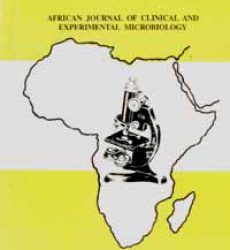*1Al-Quthami, K., 2Al-Waneen, W. S., and 3Al Johnyi, B. O.
1Regional Laboratory, Makkah, Saudi Arabia
2National Centre of Agricultural Technology, King Abdulaziz City for Science and Technology, Saudi Arabia
3King Abdulaziz University, Saudi Arabia
*Correspondence to: khmrqu@hotmail.com
Abstract:
Background: The Middle East Respiratory Syndrome (MERS) is a viral respiratory disease caused by a member of the coronaviruses called Middle East Respiratory Syndrome Coronavirus (MERS-CoV). The co-infections of MERS-CoV with other respiratory viruses have been documented in rare cases in the scientific literature. This study was carried out to determine whether confection of MERS-CoV occurs with other respiratory viruses in Saudi Arabia.
Methods: Nasopharyngeal swabs samples of 57 MERS-CoV positive outpatients were collected using flocked swabs. Nucleic acid was extracted from each sample using commercial NucliSens easyMAG system. Amplification was performed by multiplex RT-PCR using Fast Track Diagnostics Respiratory Pathogen 33. Data were analyzed with SPSS software version 19 and comparison of variables was done with Fisher Exact test, with p value <0.05 considered significant.
Results: Six of the total 57 MERS-COV patients (35 males, 22 females) were positive for co-infection of MERS CoV with other respiratory viruses, giving a prevalence rate of 10.5%, with 14.5% (5/35) in males and 4.5% (1/22) in females (OR=3.500, 95% CI=0.3806-32.188, p=0.3889). The prevalence of co-infections was significantly higher among non-Saudis (23.8%, 5/21) than Saudis (2.8%, 1/36) (OR=0.09143, 95% CI=0.009855-0.8485, p=0.0217), and among the age group 18-34 years (25%, 3/12) than other age groups (X2=3.649, p=0.1613). Human rhinovirus (HRV) was found in 2 of the 6 (33.3%) patients with co-infection while the other viruses were found in each of the remaining 4 patients.
Conclusion: Our study confirms that MERS-CoV co-infects with other respiratory viruses in Saudi Arabia.
Keywords: MERS-CoV, URTI, Co-infection, Coronavirus Continue reading “Co-infections of MERS-CoV with other respiratory viruses in Saudi Arabia”

